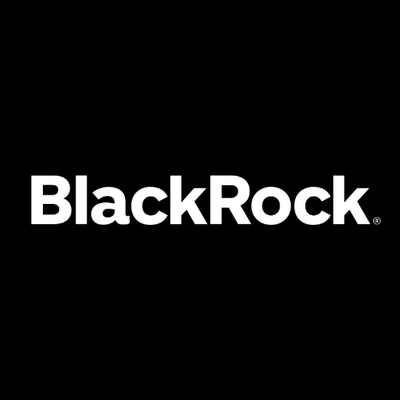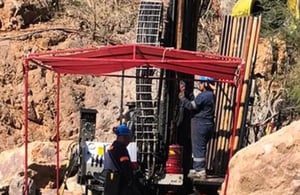Blackrock Greater Europe Investment Trust plc (LON:BRGE) has provided the following portfolio update.
All information is at 31 August 2020 and unaudited.
Performance at month end with net income reinvested
To discover more about the BlackRock Greater Europe Investment Trust click here.
| One Month | Three Months | One Year | Three Years | Launch (20 Sep 04) | |
| Net asset value (undiluted) | 4.5% | 12.9% | 17.2% | 39.2% | 512.4% |
| Net asset value* (diluted) | 4.7% | 12.9% | 17.1% | 39.1% | 512.7% |
| Share price | 2.3% | 13.2% | 18.0% | 43.1% | 500.1% |
| FTSE World Europe ex UK | 2.2% | 5.7% | 0.7% | 7.1% | 271.2% |
* Diluted for treasury shares and subscription shares.
Sources: BlackRock and Datastream
At month end
| Net asset value (capital only): | 456.23p |
| Net asset value (including income): | 460.95p |
| Net asset value (capital only)1: | 456.23p |
| Net asset value (including income)1: | 460.95p |
| Share price: | 447.00p |
| Discount to NAV (including income): | 3.0% |
| Discount to NAV (including income)1: | 3.0% |
| Net gearing: | 5.7% |
| Net yield2: | 1.3% |
| Total assets (including income): | 388.7m |
| Ordinary shares in issue3: | 84,323,101 |
| Ongoing charges4: | 1.1% |
1 Diluted for treasury shares.
2 Based on a final dividend of 4.10p per share for the year ended 31 August 2019 and an interim dividend of 1.75p per share for the year ending 31 August 2020.
3 Excluding 26,005,837 shares held in treasury.
4 Calculated as a percentage of average net assets and using expenses, excluding interest costs, after relief for taxation, for the year ended 31 August 2019.
| Sector Analysis | Total Assets (%) | Country Analysis | Total Assets (%) | |
| Technology | 26.0 | Denmark | 18.8 | |
| Industrials | 18.3 | Switzerland | 14.5 | |
| Health Care | 17.3 | Netherlands | 12.2 | |
| Consumer Goods | 11.1 | France | 12.2 | |
| Consumer Services | 9.2 | Germany | 10.0 | |
| Financials | 8.5 | Italy | 5.9 | |
| Oil & Gas | 3.8 | Sweden | 5.6 | |
| Basic Materials | 3.5 | United Kingdom | 4.0 | |
| Telecommunications | 1.9 | Russia | 3.4 | |
| Net Current Assets | 0.4 | Israel | 2.7 | |
| —– | Spain | 2.5 | ||
| 100.0 | Belgium | 2.3 | ||
| ===== | Finland | 2.3 | ||
| Ireland | 2.2 | |||
| Poland | 0.8 | |||
| Greece | 0.2 | |||
| Net Current Assets | 0.4 | |||
| —– | ||||
| 100.0 | ||||
| ===== |
| Top 10 Holdings | Country | Fund % |
| ASML | Netherlands | 6.1 |
| Sika | Switzerland | 6.0 |
| SAP | Germany | 5.9 |
| Lonza Group | Switzerland | 5.2 |
| Kering | France | 5.2 |
| Novo Nordisk | Denmark | 5.1 |
| Royal Unibrew | Denmark | 5.1 |
| DSV | Denmark | 4.5 |
| RELX | United Kingdom | 4.1 |
| Safran | France | 3.6 |
Commenting on the markets, Stefan Gries, representing the Investment Manager, noted:
During the month, the Company’s NAV rose 4.5% and the share price rose 2.3%. For reference, the FTSE World Europe Ex UK Index returned 2.2% during the period.
Europe ex UK markets were up during August with cyclical assets leading the strong market. Defensive sectors including healthcare, utilities and telecommunications lagged the market rally.
The rising market was driven by better economic figures as well as hopes for successful Covid-19 vaccine trials. Fundamental news were fairly limited during the month.
The Company outperformed the reference index over the month, driven by strong stock selection while sector allocation was also positive.
In sector terms, the Company benefitted from a higher allocation to industrials, technology and consumer services as well as a lower allocation to utilities. Our lower weighting to defensive areas of the market including utilities was also positive for relative returns while an overweight exposure to the healthcare sector detracted.
A number of more cyclically exposed assets such as DSV, Kingspan and Sika were amongst the top contributors to returns. DSV continued to perform following strong Q2 results and enjoyed further tailwinds from the continued recovery in trade volumes in August. Building materials company Kingspan reported strong numbers during the month, which is testament to very strong management execution. The company over-delivered on costs and reported revenues ahead of consensus. Kingspan benefitted from its diverse end market exposure seeing good trading in North America, Germany and the Scandinavian countries while the UK was slightly weaker. Strong medium term growth drivers for Kingspan include the continued shift towards more energy efficient buildings as well as its involvement in building new facilities for electric vehicles.
Sika also continued to contribute strongly to Company performance after announcing H1 results ahead of expectations back in July. There was little stock specific news in August, aside from qualitative comments that the business has seen an acceleration in growth in key markets like North America and Europe in July and August.
The technology sector contributed equally strongly. Hexagon, an industrial and software conglomerate, drove returns as the company pre-announced Q2 earnings with sales c. 6% and EBIT 34% ahead of expectations. The business specializes in the provision of geo-mapping and monitoring software and sensors, as well as plant management and automation systems. Its products have applications in diverse end markets including smart phones, mining automation, construction surveying, and agriculture optimization.
Also within technology, Danish IT service provider Netcompany was positive for performance as management continued to execute strongly, delivering a strong Q2 update and reiterating guidance of 18-20% organic sales growth for 2020 overall. Customer demand during the crisis was virtually unchanged as many customers prioritized digitalization projects and the company was quickly able to move to working remotely. They further benefitted from a diverse client base serving various customers for the financial, telecommunication and media, retail and trade, energy and supply, service and industrial sector, as well as governments and municipalities. We believe Netcompany’s end markets offer attractive growth opportunities for many years to come.
Another positive contributor was Neste Oil. Shares continued to perform well following solid results in July. Furthermore, the renewable diesel manufacturer signed three new contracts with US airlines to supply them with sustainable aviation fuel at San Francisco airport.
The Company’s holding in luxury group Kering contributed on hopes of travel retail coming back after having been slightly weaker in previous months. With the help from our data scientist, we continue to closely monitor consumer spending trends across all regions.
Not owning large, defensive benchmark constituents including Nestle, Sanofi and Roche aided returns as these names generally lagged the market.
Detractors included some of the Company’s holdings in the healthcare sector. Lonza, DiaSorin, Grifols and Novo Nordisk were all amongst the bottom performers despite a lack of stock specific news flow. A number of these positions saw a degree of profit taking after having performed very strongly over the last few months.
Elsewhere, not owning Deutsche Post, Siemens and Daimler was also negative for performance. Shares in the latter rose as the German car company confirmed strong trading in China during May and June.
At the end of the period the Company had a higher allocation than the reference index towards technology, consumer services, industrials and health care. The Company had a neutral weighting towards oil & gas and underweight allocation to consumer goods, financials, utilities, basic materials and telecoms.
Outlook
Over recent years, many investors have avoided exposure to European equities owing to concerns around political risk, rising populism, a challenged financial system and the regions larger than average exposure to China. We have long been of the view that one needs to take an active approach to investing in European equities. With this in mind, we didn’t need to be positive on Europe as a region to offer our shareholders exposure to some highly attractive companies that happened to be listed in the region. The response to the fallout from COVID 19 has the potential to change the more negative perception on the asset class as a whole.
The proposed €750bn EU Recovery Fund is a great step of solidarity for the bloc and one that can potentially bring greater fiscal coordination.
This fund, made up of €390bn of grants and €360bn of loans, could create net transfers ranging from 3% to 20% of GDP for countries such as Greece, Portugal, Spain and Italy. To be funded from issuance of common EU bonds, this fund marks the first instance of debt mutualisation for the region – a step which will act to bring in yield spreads for those southern economies and potentially reduce the ever looming risk associated with a break-up of the bloc. We believe this can bring down the overall risk premium for European equities.
In this context, both the economy and local stock markets appear well positioned to make up lost ground, potentially transforming European equities into a standout opportunity in the developed world while notably providing further subsidies for growth in Emerging Europe.
17 September 2020
To discover more about the BlackRock Greater Europe Investment Trust click here.





































